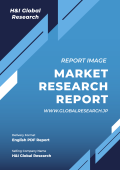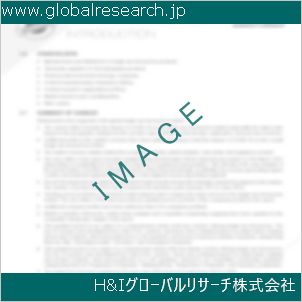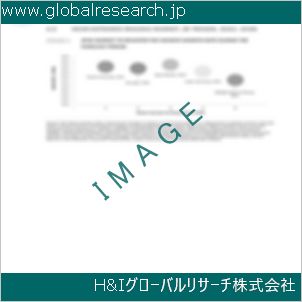目次
第1章. グローバルポリウレタン分散剤市場レポートの範囲と方法論
1.1. 研究目的
1.2. 研究方法論
1.2.1. 予測モデル
1.2.2. デスク調査
1.2.3. トップダウンとボトムアップアプローチ
1.3. 研究属性
1.4. 研究の範囲
1.4.1. 市場定義
1.4.2. 市場セグメンテーション
1.5. 研究の仮定
1.5.1. 包含と除外
1.5.2. 制限事項
1.5.3. 調査対象期間
第2章 概要
2.1. CEO/CXOの視点
2.2. 戦略的洞察
2.3. ESG分析
2.4. 主要な発見
第3章 グローバルポリウレタン分散剤市場動向分析
3.1. グローバルポリウレタン分散剤市場を形作る市場要因(2024–2035)
3.2. 推進要因
3.2.1. 環境配慮型で低VOCのコーティングソリューションの需要増加
3.2.2. スマートインフラと都市開発プロジェクトの拡大
3.2.3. 自動車内装材および靴製造における応用拡大
3.3. 制約
3.3.1. 原材料の価格変動
3.3.2. 溶剤系システムと比較した複雑な配合課題
3.4. 機会
3.4.1. 新興国における水系分散剤の需要急増
3.4.2. バイオベースおよびハイブリッドポリウレタンシステムにおけるイノベーション
3.4. 機会
第4章 グローバルポリウレタン分散剤産業分析
4.1. ポーターの5つの力モデル
4.1.1. 購入者の交渉力
4.1.2. 供給者の交渉力
4.1.3. 新規参入の脅威
4.1.4. 代替品の脅威
4.1.5. 競合企業の競争
4.2. ポーターの5つの力予測モデル(2024–2035)
4.3. PESTEL分析
4.3.1. 政治
4.3.2. 経済的
4.3.3. 社会
4.3.4. 技術的
4.3.5. 環境
4.3.6. 法的
4.4. 主要な投資機会
4.5. 主要な成功戦略(2025年)
4.6. 市場シェア分析(2024–2025)
4.7. グローバル価格分析と動向(2025年)
4.8. 分析家の推奨事項と結論
第5章. グローバルポリウレタン分散剤市場規模と予測(タイプ別)2025–2035
5.1. 市場概要
5.2. グローバルポリウレタン分散剤市場パフォーマンス – 潜在分析(2025年)
5.3. 水系
5.3.1. 主要国別市場規模推計と予測(2024–2035)
5.3.2. 地域別市場規模分析(2025年~2035年)
5.4. 溶剤系
5.4.1. 主要国別市場規模推計と予測(2024年~2035年)
5.4.2. 地域別市場規模分析、2025–2035
第6章. グローバルポリウレタン分散剤市場規模と予測(用途別)2025–2035
6.1. 市場概要
6.2. グローバルポリウレタン分散剤市場パフォーマンス – 潜在分析(2025年)
6.3. コーティング
6.4. 接着剤およびシーラント
6.5. 皮革仕上げ
6.6. 紙・繊維
6.7. ファイバーグラスサイズング
6.8. その他
第7章. グローバルポリウレタン分散剤市場規模と地域別予測(2025年~2035年)
7.1. 地域別市場概要
7.2. 主要なリーダー企業と新興国
7.3. 北米
7.3.1. アメリカ合衆国
7.3.1.1. タイプ別市場規模と予測(2025–2035年)
7.3.1.2. 用途別市場規模と予測(2025~2035年)
7.3.2. カナダ
7.3.2.1. タイプ別市場規模と予測(2025年~2035年)
7.3.2.2. 用途別市場規模と予測(2025年~2035年)
7.4. ヨーロッパ
7.4.1. イギリス
7.4.1.1. タイプ別市場規模と予測(2025~2035年)
7.4.1.2. 用途別市場規模と予測(2025~2035年)
7.4.2. ドイツ
7.4.3. フランス
7.4.4. スペイン
7.4.5. イタリア
7.4.6. 欧州その他
7.5. アジア太平洋
7.5.1. 中国
7.5.2. インド
7.5.3. 日本
7.5.4. オーストラリア
7.5.5. 大韓民国
7.5.6. アジア太平洋地域その他
7.6. ラテンアメリカ
7.6.1. ブラジル
7.6.2. メキシコ
7.7. 中東・アフリカ
7.7.1. アラブ首長国連邦
7.7.2. サウジアラビア
7.7.3. 南アフリカ
7.7.4. 中東・アフリカその他の地域
第8章 競合分析
8.1. 主要な市場戦略
8.2. BASF SE
8.2.1. 概要
8.2.2. 主要な経営陣
8.2.3. 会社の概要
8.2.4. 財務実績(データ入手状況により異なります)
8.2.5. 製品/サービスポートフォリオ
8.2.6. 最近の動向
8.2.7. 市場戦略
8.2.8. SWOT分析
8.3. ハンツマン・コーポレーション
8.4. ダウ・インク
8.5. コベストロAG
8.6. 三井化学株式会社
8.7. ワンファ・ケミカル・グループ株式会社
8.8. ディーアイシー株式会社
8.9. ランセスAG
8.10. ハウサウェイ・コーポレーション
8.11. アルベルディンク・ボレイ GmbH
8.12. シンセマー・ピーエルシー
8.13. ペルストルプ・グループ
8.14. ミシェルマン・インク
8.15. チェイス・コーポレーション
8.16. ルブリゾル・コーポレーション
8.12. シンセマー・ピーエルシー
表の一覧
表1. グローバルポリウレタン分散剤市場、レポートの範囲
表2. 地域別グローバル市場規模推計および予測(2024年~2035年)
表3. グローバル市場規模推計および予測(タイプ別)、2024–2035
表4. グローバル市場規模推計と予測(用途別)、2024–2035
表5. 米国市場推定値と予測、2024–2035
表6. カナダ市場推定値と予測、2024–2035
表7. イギリス市場推定値と予測、2024–2035
表8. ドイツ市場推定値と予測、2024–2035
表9. フランス市場の見積もりおよび予測、2024–2035
表10. スペイン市場の見積もりおよび予測、2024–2035
表11. イタリア市場の見積もりおよび予測、2024–2035
表12. 欧州その他の地域市場推定値と予測、2024–2035
表13. 中国市場の見積もりおよび予測、2024–2035
表14. インド市場の見積もりおよび予測、2024–2035
表15. 日本市場の見積もりおよび予測、2024–2035
表16. オーストラリア市場の見積もりおよび予測、2024–2035
表17. 韓国市場の見積もりおよび予測、2024–2035
表18. ブラジル市場の見積もりおよび予測、2024–2035
表19. メキシコ市場の見積もりおよび予測、2024–2035
表20. アラブ首長国連邦(UAE)市場推定値と予測、2024–2035
表21. サウジアラビア市場推定値と予測、2024–2035
表22. 南アフリカ市場推定値と予測、2024–2035
表23. 中東・アフリカその他の地域市場推定値と予測、2024–2035
図表一覧
図1. グローバルポリウレタン分散剤市場、調査方法論
図2. 市場推定手法
図3. 市場規模推計および予測手法
図4. 主要な動向、2025年
図5. 成長見通し(2024年~2035年)
図6. ポーターの5つの力モデル
図7. PESTEL分析
図8. バリューチェーン分析
図9. 市場タイプ別市場規模(2025年と2035年)
図10. 用途別市場、2025年と2035年
図11. 北米市場予測、2025年と2035年
図12. 欧州市場予測、2025年と2035年
図13. アジア太平洋市場予測、2025年と2035年
図14. ラテンアメリカ市場予測、2025年と2035年
図15. 中東・アフリカ市場予測、2025年と2035年
図16. 2025年の企業市場シェア分析
Chapter 1. Global Polyurethane Dispersions Market Report Scope & Methodology
1.1. Research Objective
1.2. Research Methodology
1.2.1. Forecast Model
1.2.2. Desk Research
1.2.3. Top Down and Bottom-Up Approach
1.3. Research Attributes
1.4. Scope of the Study
1.4.1. Market Definition
1.4.2. Market Segmentation
1.5. Research Assumption
1.5.1. Inclusion & Exclusion
1.5.2. Limitations
1.5.3. Years Considered for the Study
Chapter 2. Executive Summary
2.1. CEO/CXO Standpoint
2.2. Strategic Insights
2.3. ESG Analysis
2.4. Key Findings
Chapter 3. Global Polyurethane Dispersions Market Forces Analysis
3.1. Market Forces Shaping the Global Polyurethane Dispersions Market (2024–2035)
3.2. Drivers
3.2.1. Rising demand for eco-friendly and low-VOC coating solutions
3.2.2. Expansion of smart infrastructure and urban development projects
3.2.3. Increasing application in automotive interiors and footwear manufacturing
3.3. Restraints
3.3.1. Price volatility of raw materials
3.3.2. Complex formulation challenges compared to solvent-based systems
3.4. Opportunities
3.4.1. Surging demand for water-based dispersions in emerging economies
3.4.2. Innovations in bio-based and hybrid polyurethane systems
Chapter 4. Global Polyurethane Dispersions Industry Analysis
4.1. Porter’s 5 Forces Model
4.1.1. Bargaining Power of Buyer
4.1.2. Bargaining Power of Supplier
4.1.3. Threat of New Entrants
4.1.4. Threat of Substitutes
4.1.5. Competitive Rivalry
4.2. Porter’s 5 Force Forecast Model (2024–2035)
4.3. PESTEL Analysis
4.3.1. Political
4.3.2. Economical
4.3.3. Social
4.3.4. Technological
4.3.5. Environmental
4.3.6. Legal
4.4. Top Investment Opportunities
4.5. Top Winning Strategies (2025)
4.6. Market Share Analysis (2024–2025)
4.7. Global Pricing Analysis and Trends 2025
4.8. Analyst Recommendation & Conclusion
Chapter 5. Global Polyurethane Dispersions Market Size & Forecasts by Type 2025–2035
5.1. Market Overview
5.2. Global Polyurethane Dispersions Market Performance – Potential Analysis (2025)
5.3. Water Based
5.3.1. Top Countries Breakdown Estimates & Forecasts, 2024–2035
5.3.2. Market Size Analysis, by Region, 2025–2035
5.4. Solvent Based
5.4.1. Top Countries Breakdown Estimates & Forecasts, 2024–2035
5.4.2. Market Size Analysis, by Region, 2025–2035
Chapter 6. Global Polyurethane Dispersions Market Size & Forecasts by Application 2025–2035
6.1. Market Overview
6.2. Global Polyurethane Dispersions Market Performance – Potential Analysis (2025)
6.3. Coatings
6.4. Adhesives & Sealants
6.5. Leather Finishing
6.6. Paper & Textile
6.7. Fiberglass Sizing
6.8. Others
Chapter 7. Global Polyurethane Dispersions Market Size & Forecasts by Region 2025–2035
7.1. Regional Market Snapshot
7.2. Top Leading & Emerging Countries
7.3. North America
7.3.1. U.S.
7.3.1.1. Type Breakdown Size & Forecasts, 2025–2035
7.3.1.2. Application Breakdown Size & Forecasts, 2025–2035
7.3.2. Canada
7.3.2.1. Type Breakdown Size & Forecasts, 2025–2035
7.3.2.2. Application Breakdown Size & Forecasts, 2025–2035
7.4. Europe
7.4.1. UK
7.4.1.1. Type Breakdown Size & Forecasts, 2025–2035
7.4.1.2. Application Breakdown Size & Forecasts, 2025–2035
7.4.2. Germany
7.4.3. France
7.4.4. Spain
7.4.5. Italy
7.4.6. Rest of Europe
7.5. Asia Pacific
7.5.1. China
7.5.2. India
7.5.3. Japan
7.5.4. Australia
7.5.5. South Korea
7.5.6. Rest of Asia Pacific
7.6. Latin America
7.6.1. Brazil
7.6.2. Mexico
7.7. Middle East & Africa
7.7.1. UAE
7.7.2. Saudi Arabia
7.7.3. South Africa
7.7.4. Rest of Middle East & Africa
Chapter 8. Competitive Intelligence
8.1. Top Market Strategies
8.2. BASF SE
8.2.1. Company Overview
8.2.2. Key Executives
8.2.3. Company Snapshot
8.2.4. Financial Performance (Subject to Data Availability)
8.2.5. Product/Services Port
8.2.6. Recent Development
8.2.7. Market Strategies
8.2.8. SWOT Analysis
8.3. Huntsman Corporation
8.4. Dow Inc.
8.5. Covestro AG
8.6. Mitsui Chemicals, Inc.
8.7. Wanhua Chemical Group Co., Ltd.
8.8. DIC Corporation
8.9. Lanxess AG
8.10. Hauthaway Corporation
8.11. Alberdingk Boley GmbH
8.12. Synthomer plc
8.13. Perstorp Group
8.14. Michelman Inc.
8.15. Chase Corporation
8.16. Lubrizol Corporation
❖ 免責事項 ❖
http://www.globalresearch.jp/disclaimer












